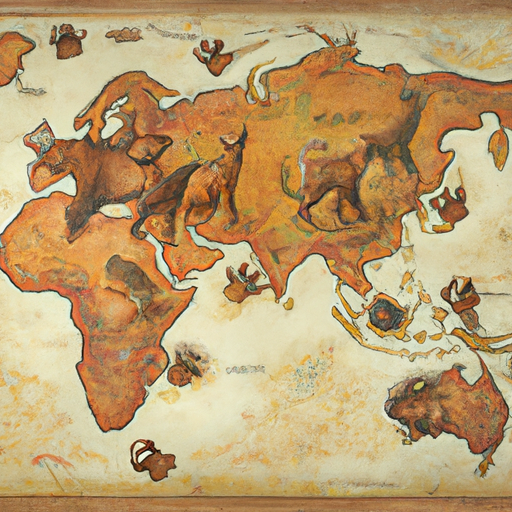The Journey of Canine Evolution
The story of where dogs come from takes us back to a time when you, as a caregiver, might have been caring for a completely different set of creatures. Scientists believe that the domestic dog, or Canis lupus familiaris, originated from wild wolves over 15,000 years ago. This wasn’t a simple, straight-line evolution, though.
Imagine this – a tableau of ice age wilderness, a group of hunters sharing their spoils with wolves. The friendliest and least fearful wolves were probably the ones that stayed close to humans, leading to a sort of natural selection favoring tamer wolves. Over generations, these wolves evolved into a separate species – our good old domestic dog.
The Canine Family Tree
Our dogs’ ancestors were a wolf species known as Canis lupus. But how did they go from being wild wolves to the lovable, loyal companions we know today? Let’s look at it in a numbered list:
- Early Domestication: About 20,000 to 40,000 years ago, humans began to domesticate wolves. The friendliest wolves were likely to get more food and protection, so they had better survival and reproduction rates.
- Breeding for Traits: Over time, humans began to selectively breed dogs for specific traits. This is how we ended up with so many diverse breeds.
- Modern Breeding: In the past few hundred years, breeding has intensified, leading to the 300+ breeds we have today.
Here is a simple table to illustrate the timeline:
| Time Period | Event |
|---|---|
| 20,000 – 40,000 years ago | Early Domestication |
| 10,000 years ago – present | Breeding for Traits |
| Last few hundred years | Modern Breeding |
The Role of DNA in Unraveling the Mystery
Just like a detective uses fingerprints to solve a mystery, scientists use DNA to trace the origins of dogs. The DNA of modern dogs has been compared with the DNA of wolves and other ancient dog remains. This complicated puzzle of genetics has revealed a lot about how dogs evolved and spread around the world.
The Global Spread of Dogs
From the icy tundras of Siberia to the sandy deserts of Egypt, dogs have traveled with humans to every corner of the globe. Each region has its unique breeds, shaped by the local climate, culture, and needs of the people. Imagine you, as a caregiver, living thousands of years ago – your dog might have been a crucial part of your survival, helping in hunting or protecting your territory.
The Importance of Understanding Your Dog’s Origins
Knowing where dogs come from helps us understand their needs and behavior. You, as a caregiver, can provide better care and a more suitable environment if you understand your dog’s breed and its original purpose. For instance, a herding breed will be happier with lots of exercise and mental stimulation, while a lapdog breed might prefer a quiet, indoor environment.
FAQ
Q: When did dogs first start living with humans?
A: Dogs started living with humans about 20,000 to 40,000 years ago.
Q: How many dog breeds are there?
A: There are over 300 recognized dog breeds today.
Q: Why do different regions have different breeds?
A: Breeds were shaped by local climate, culture, and the specific needs of the people.
Q: Why is it important to know my dog’s breed?
A: Knowing your dog’s breed can help you understand its needs and behavior, providing better care.
Q: Are dogs still evolving?
A: Yes, dogs continue to evolve, both naturally and due to human-directed breeding.



